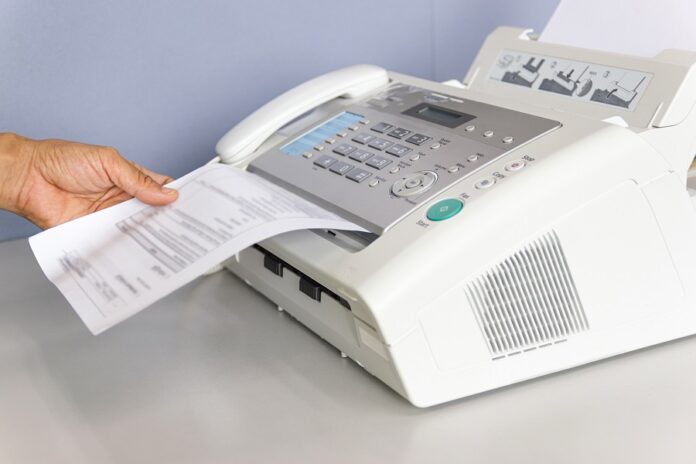It’s quite surprising to note that the first-ever facsimile (fax) machine was invented in 1843 or 30 years before the creation of its close relative, the telephone. The latter was invented around 1876, and its development was accredited to many inventors, most notably, Alexander Graham Bell. Unlike the telephone, though, the creation of the fax machine is attributed to only one person – Scottish clockmaker and physicist Alexander Bain.
Since then, these business machines have played essential functions, undoubtedly changing the way businesses and individuals communicate all over the world.
Here are how devices for fax services had evolved from analogue to digital form in keeping up with technology.
Timeline For the Evolution Of The Fax Machine
Fax inventor Alexander Bain was said to have worked on the communication device after the creation of the first-ever telegraph machine created by Samuel Morse. The former’s technology harnessed the telegraph’s mechanics in sending messages to faraway locations.
Below are the important dates in the history and evolution of fax machines:
Analogue Fax Transmissions – Fax machines that use analogue technologies produce good quality messages. They work simply by taking the message and converting it to electronic pulses. These pulses move through the network until they reach the recipient’s device which translates the pulses back into the original document.
Before the advent of Internet technology, analogue fax machines were the only way to send data in a secure and fast manner over long distances.
- 1843- Mechanical Fax
Mr. Bain earned the British patent for the ‘Electric Printing Telegraph’ machine. In the next three years, he was able to create graphic signs in a successful experiment. Understandably, the image produced was of poor quality, and it took a long time to be sent.
- 1850- Copying Telegraph
British inventor Frederick Bakewell was granted a patent for a ‘copying telegraph’– improving on the technology tapped by Bain. Using rotating cylinders and a stylus, it’s believed that most modern fax machines are inspired by Bakewell’s version.
- 1860- Pantelegraph
Italian priest and inventor Giovanni Caselli invented the Pantelegraph –which is marketed as an improved version of Bain’s and Blackwell’s creations. To demonstrate its essential functions, Caselli successfully sent a message between French capital cities Paris and Lyon.
- 1880-Scanning PhotoTelegraph
The advancements just kept going with Shelford Bidwell creating the Scanning PhotoTelegraph machine, the first telefax machine that can scan and send a two-dimensional image, without requiring manual drawing or plotting.
- 1888- TelAutograph
Elisha Gray, co-founder of Western Electric Manufacturing Company, invented the Telautograph which allows senders to transmit signatures in remote destinations.
- 1895-Telediagraph
Another American inventor, Ernest Hummel, assembled a device called Telediagraph which functions similarly to a TelAutograph.
- 1902-Photoelectric System Integration
In the year that followed, German physicist and inventor Dr. Arthur Korn improved the technology used in fax machines through the integration of a photoelectric system.
- 1914- Fax For Media Use
French photographer and inventor Edouard Belin blazed the trail for using remote fax for media reporting, particularly in sending photo and news articles.
- 1924- Fax Machine Achieves A Milestone
Researchers from a telecommunications company giant in the US further improved the technology used in sending and receiving fax messages. They tested their work by sending photos for publication in the news over long distances. One page of the first ever colored fax message took six minutes to send.
Another American corporation invented the TransOceanic Radio Facsimile and sent a colored photo trans continentally between New York and London.
- 1947- Birth Of A More Modern Fax Machine
Scottish electrical engineer Alexander Muirhead invented a more compact and modern fax machine.
- 1960- Satellite Fax
The U.S. Army ambitiously and successfully sends the first photograph using satellite facsimile technologies from US to Puerto Rico.
- 1964- Fax Through Telephone Transmission
A major American business equipment manufacturer patented the first ever fax machine intended for commercial use. The device made use of a business phone system to send and receive messages.
Digital Fax Transmissions
Following technological advancements, digital fax transmissions eventually took over some business transactions. It works by breaking down the original message through binary codes and sent from the network to the recipient. Online fax is convenient and swift. It’s also cost-effective and can be used anywhere there’s Internet connection.
- 1982- PC To Fax Technology
As a predecessor to digital fax transmissions, an information technology company developed a computer-based fax board.
- 1996- Development Of Internet Fax
A new technology called electronic faxing, is a digital method of sending and receiving a fax message. This process uses the Internet to send documents over. A user doesn’t need to have a fax machine, only an online software to fax a document.
Final Thoughts
Sending and receiving fax messages can be done through analogue and digital means. Each has its own advantages and drawbacks.
Analogue fax transmission is still the prevailing technology. Sending and receiving messages though this method is still widely used. Comparatively, a digital fax transmission needs a receiving device that could read and reassemble the codes. Between the two, digital fax transmission is more attractive because of its speed. No doubt, really, that the trusty fax machine has come a long way.






















